Medical Studies > ATI MEDICAL SURGICAL > ATI Targeted Assessment: Med-Surgical: Perioperative Care _ 2020 | Med-Surgical: Perioperative Care (All)
ATI Targeted Assessment: Med-Surgical: Perioperative Care _ 2020 | Med-Surgical: Perioperative Care _ 2020
Document Content and Description Below
ATI Targeted Assessment: Med-Surgical: Perioperative Care 1. A nurse is providing discharge teaching for a client who is postoperative following a rhinoplasty using general anesthesia. Which of t... he following instructions should the nurse include? 2. A nurse is planning care for a client who is postoperative and has a closed-wound drainage system in place. Which of the following interventions should the nurse plan to include? 3. A nurse is receiving evening shift report on four clients who returned from the PACU that morning. The nurse should assess which of the following clients first? 4. A nurse is caring for a client who has a surgical wound with a Penrose drain in place. Which of the following interventions should the nurse plan to perform? 5. A nurse is caring for a client who has bradycardia following a surgical procedure using spinal anesthesia. The nurse should plan to administer which of the following medications to the client? 6. A client had an open transverse colectomy 5 days ago. The nurse enters the client's room and recognizes that the wound has eviscerated. After covering the wound with a sterile, saline-soaked dressing, which of the following actions should the nurse take? 7. A nurse is reviewing the medication administration record for a client who is scheduled for surgery the next day. The nurse should identify that which of the following medications places the client at risk for complications during surgery and should be reported to the provider? 8. A nurse is reviewing the medical record of a client who is scheduled for an elective surgery. Which of the following medications should the nurse expect the provider to discontinue prior to surgery to minimize the risk of complications? 9. A surgical nurse enters a surgical suite to ensure surgical asepsis is maintained. Which of the following findings requires intervention by the nurse? 10. A nurse is providing discharge instructions for a client who is postoperative following abdominal surgery. Which of the following client statements indicates an understanding of the teaching? 11. A nurse is caring for a client who is preoperative and is asking multiple question about risk of the procedure. Which of the following actions should the nurse take? 12. A nurse is assessing a client who is 2 days postoperative following a total prostatectomy. The nurse notes that the client's right calf is red, edematous, and warm to the touch. Which of the following actions should the nurse take? 13. A nurse is assessing a client's recovery from spinal anesthesia. Which of the following sensations should the nurse expect to return to the client first? 14. A nurse is caring for a client who is 12 hours postoperative from a gastrectomy and has an NG tube set to continuous low suction. Which of the following findings requires intervention by the nurse? 15. A nurse is providing teaching for a client who is scheduled to undergo moderate sedation for a bronchoscopy. The nurse should verify that the client understands the procedure when the client states which of the following? 16. A nurse is monitoring a client who received succinylcholine during a surgical procedure. Which of the following actions should the nurse take if the client develops manifestations of malignant hyperthermia? 17. A nurse is assessing a client who is preoperative. The nurse should identify that which of the following factors reported by the client increases the risk for a postoperative wound infection? 18. A nurse is providing teaching for a client who is in the immediate postoperative period and has a PCA pump. Which of the following statements should the nurse include in the teaching? 19. A nurse is reviewing the medical record of a client who is to undergo general anesthesia for surgery. The nurse should report which of the following findings to the provider? 20. A circulating nurse is monitoring the temperature in a surgical suite. The nurse should identify that cool temperatures reduce a client's risk for which of the following potential complications of surgery? 21. A nurse is caring for a client who is postoperative following abdominal surgery. Which of the following nursing interventions should the nurse perform to prevent respiratory complications? 22. A nurse in the PACU is assessing a client who is postoperative. Which of the following findings should the nurse report to the provider? 23. A nurse is providing preoperative teaching to a client who is scheduled to have a mastectomy with reconstructive surgery. Which of the following statements by the client indicates an understanding of the teaching? 24. A nurse is caring for a client who is 2 days postoperative following a cholecystectomy. The client has been vomiting for the past 24 hr and reports a pain level of 8 on a scale from 0 to 10. The nurse notes a hard, distended abdomen and absent bowel sounds. After conferring with the provider, which of the following actions should the nurse take first? 25. A nurse is providing preoperative teaching to a client who is scheduled for a gastrectomy in 1 week. The client is anxious about the upcoming surgery. Which of the following actions should the nurse take? 26. A nurse is assessing a client who is 2 hr postoperative following an appendectomy. Which of the following findings should the nurse report to the provider? 27. A nurse is caring for a client who is receiving moderate (conscious) sedation with midazolam. The client's respiratory rate decreases from 16/min to 6/min, and the oxygen saturation decreases from 92% to 85%. Which of the following medications should the nurse administer? 28. A nurse is creating a plan of care for a client who is preoperative for a total hip arthroplasty, practices Judaism, and adheres to a kosher diet. Which of the following interventions is the nurse's priority? 29. A client is transferred from the surgical suite to the PACU following oral surgery. While monitoring the client's vital signs, the nurse finds that the client's tongue has become swollen and is obstructing the airway. Which of the following actions should the nurse take first? 30. A nurse is providing preoperative teaching for a client who is about to have a below-the-knee amputation. Which of the following instructions should the nurse include? [Show More]
Last updated: 2 years ago
Preview 1 out of 6 pages
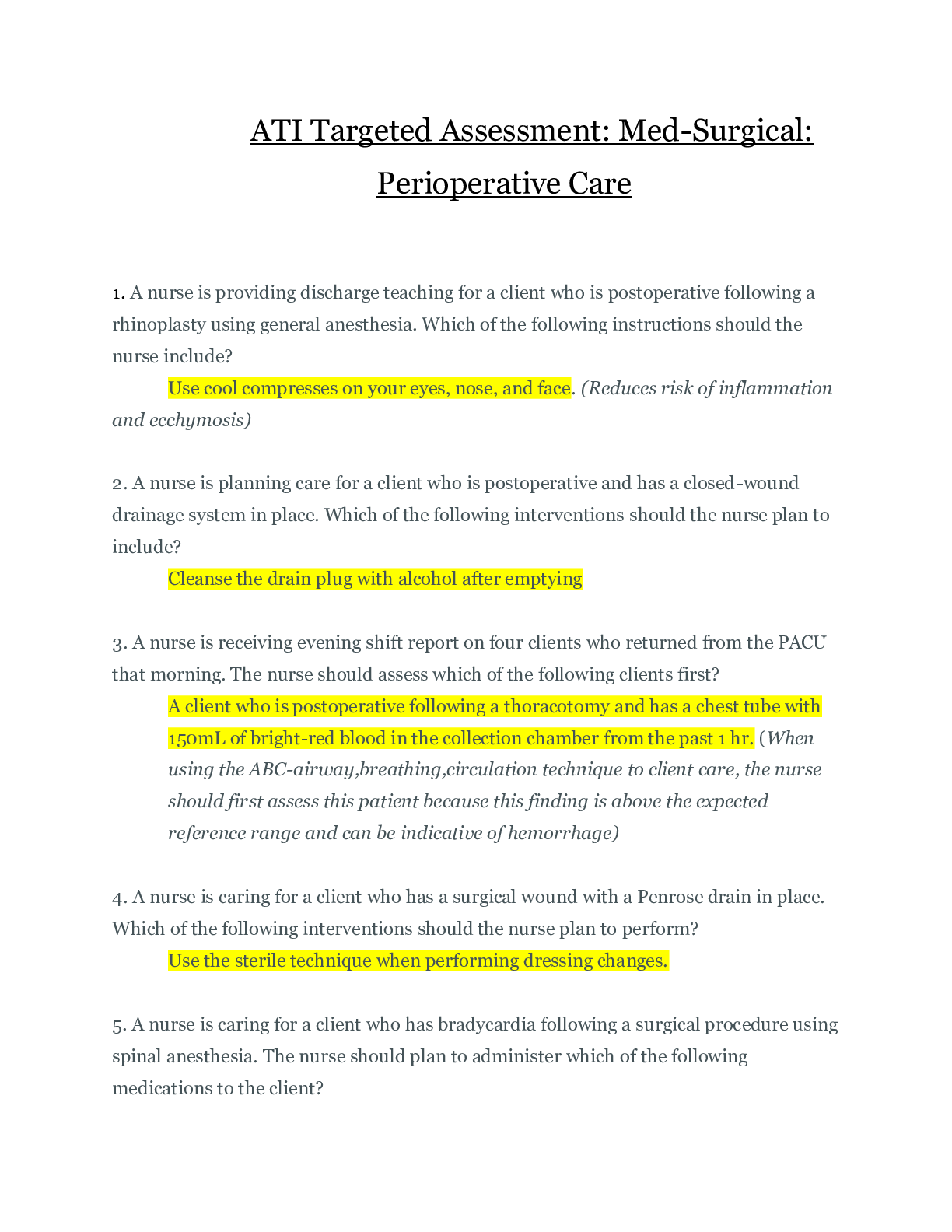
Buy this document to get the full access instantly
Instant Download Access after purchase
Buy NowInstant download
We Accept:

Reviews( 0 )
$12.50
Can't find what you want? Try our AI powered Search
Document information
Connected school, study & course
About the document
Uploaded On
Sep 23, 2020
Number of pages
6
Written in
Additional information
This document has been written for:
Uploaded
Sep 23, 2020
Downloads
0
Views
232

 – Chamberlain College of Nursing.png)
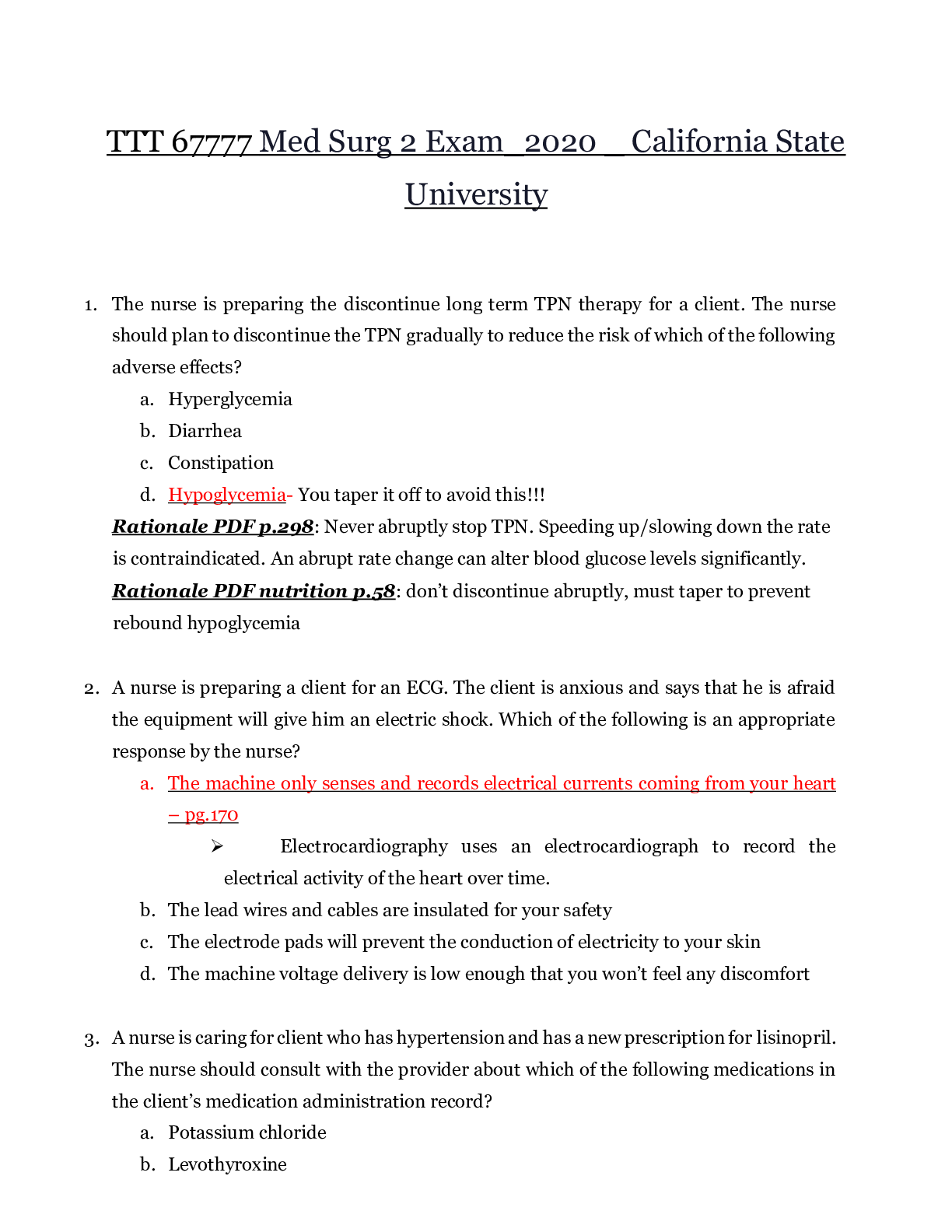
 – Chamberlain College of Nursing.png)
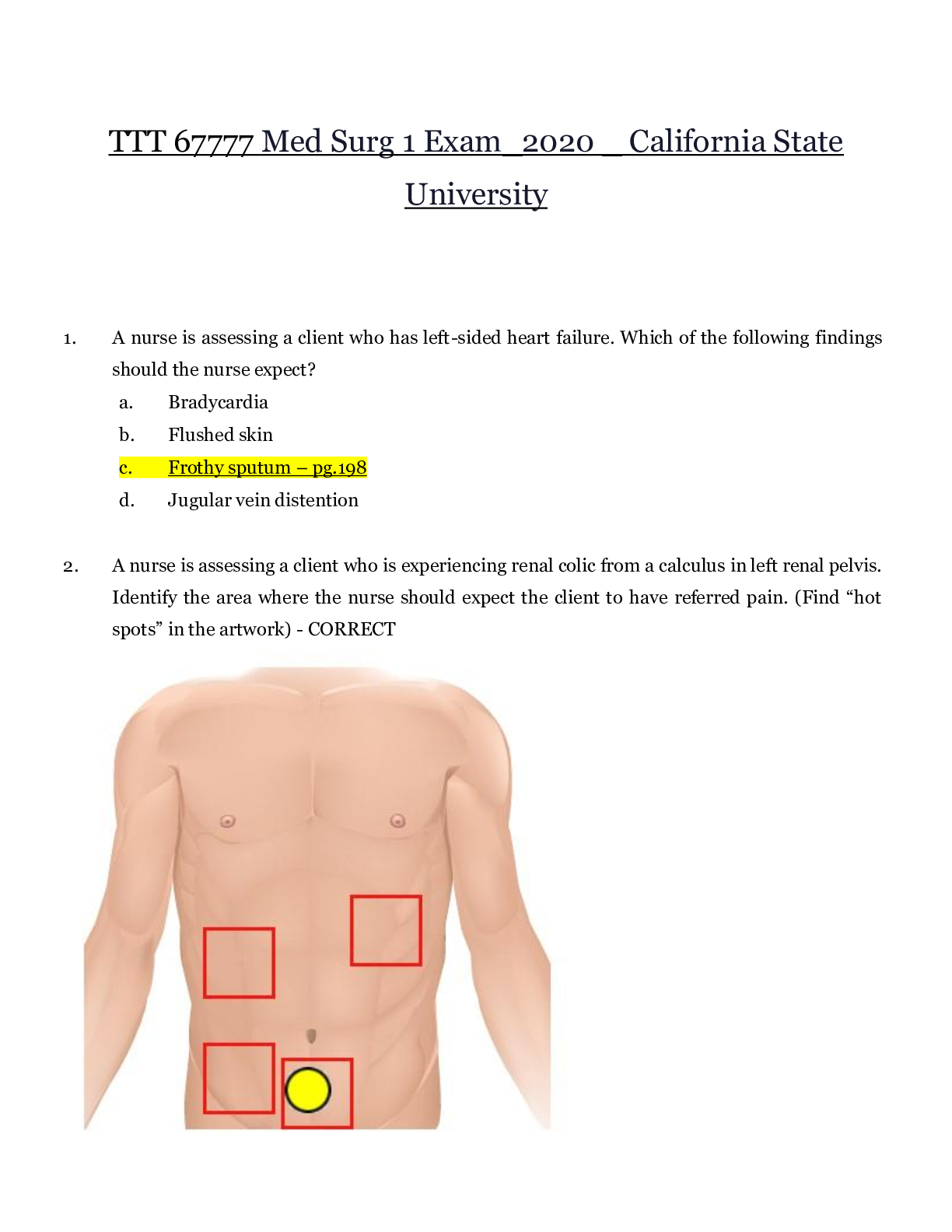
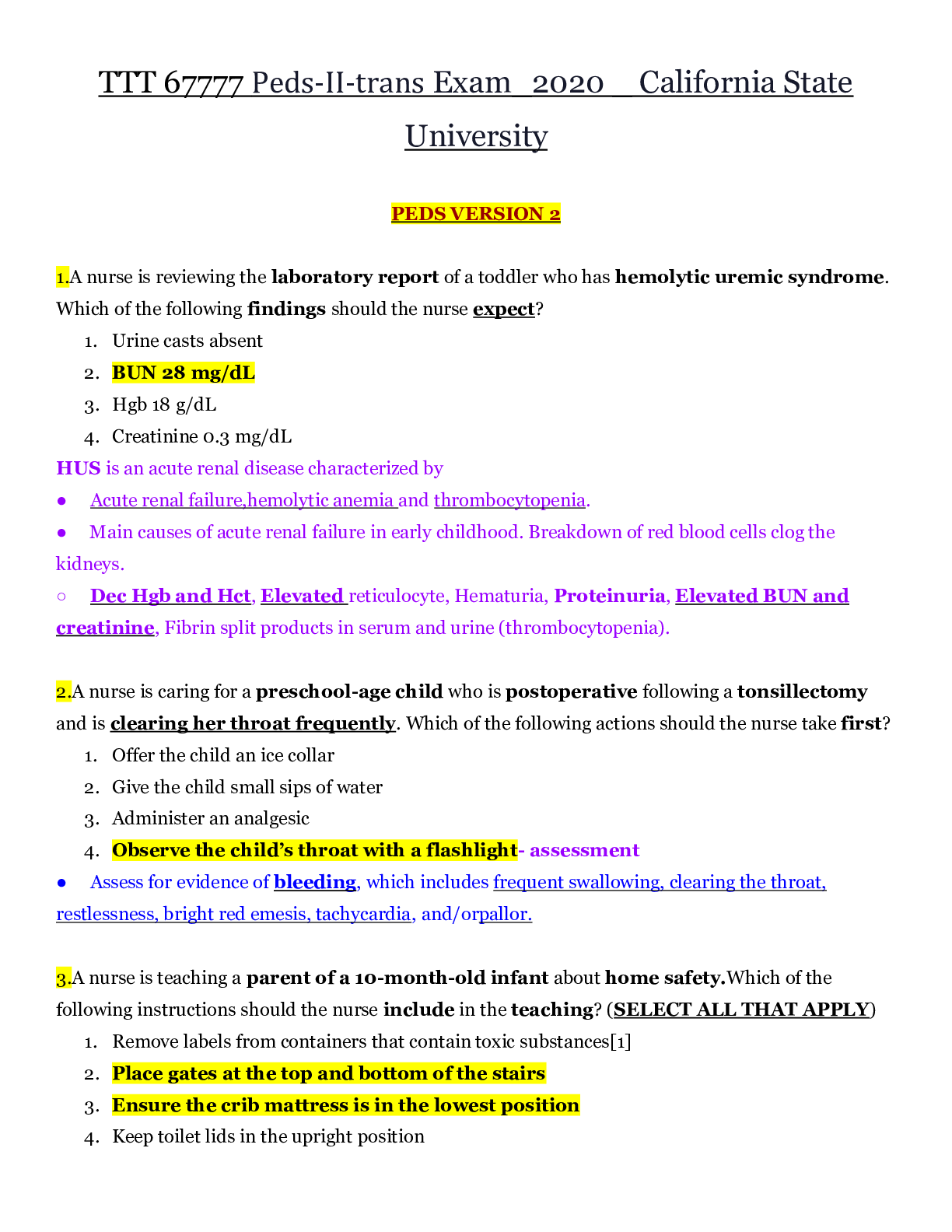

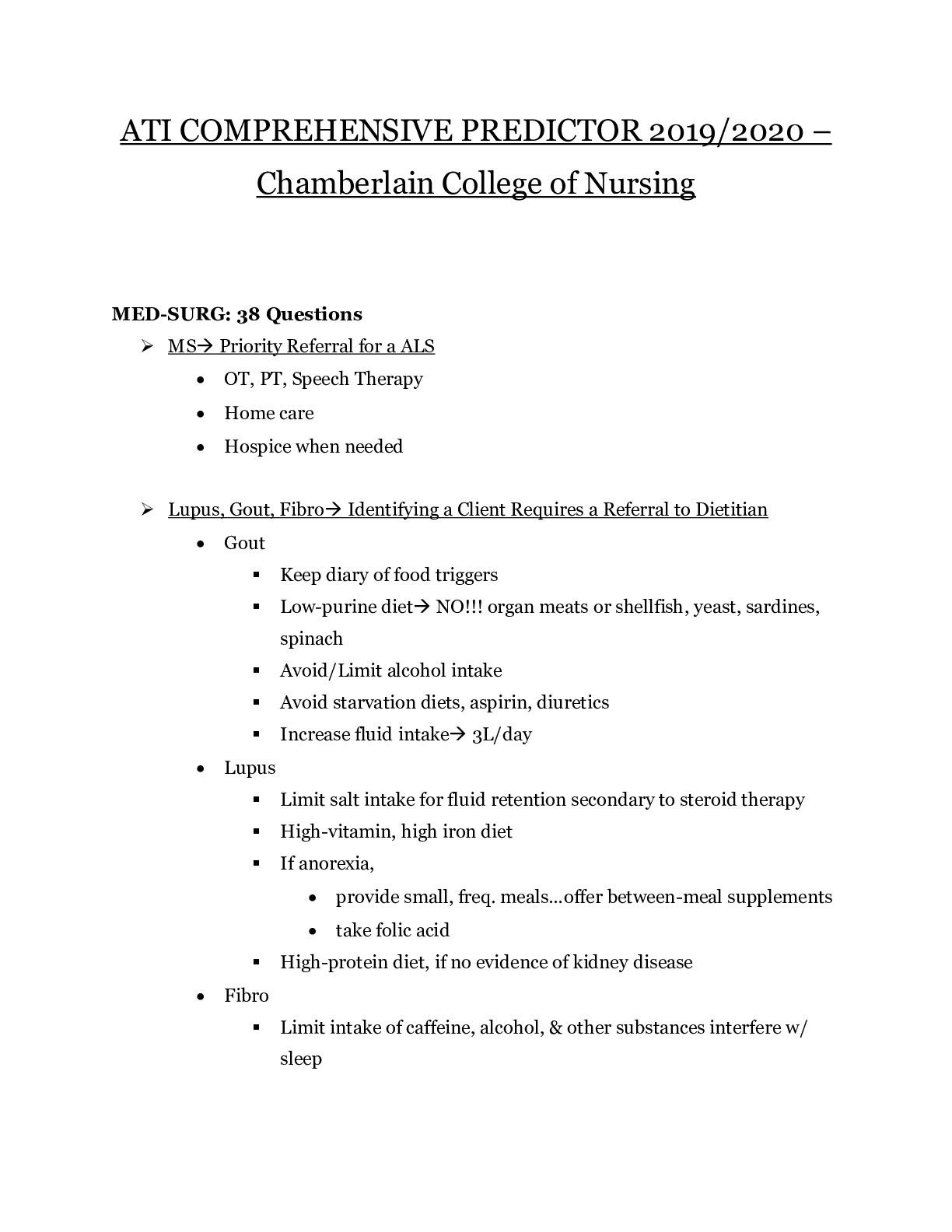



.png)


